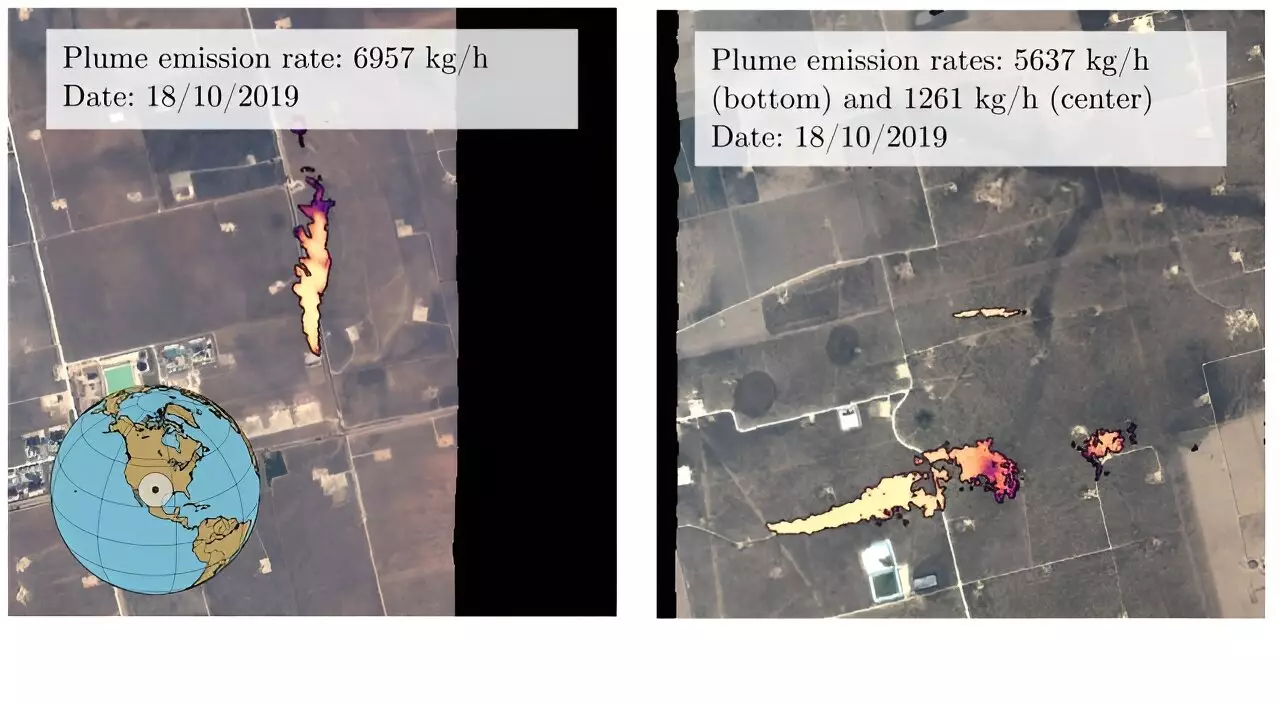In a groundbreaking study, researchers from the University of Oxford and Trillium Technologies’ NIO.space have collaborated to develop an innovative tool that can automatically detect methane plumes on Earth. By utilizing machine learning techniques with hyperspectral data, this tool aims to identify and address excessive “super emitters” of methane. The implications of this research are significant, as targeting methane emissions is crucial in combating rising global temperatures and reducing greenhouse gas effects.
While current efforts often focus on reducing CO2 emissions, it is essential to acknowledge the role that methane plays in contributing to climate change. Although methane has a much shorter atmospheric lifetime compared to CO2, it is 80 times more efficient at trapping heat. Taking swift action to decrease methane emissions would therefore have an immediate impact on slowing global heating and improving air quality. It has been estimated that achievable methane emission reductions could potentially avoid 0.3°C of global warming over the next two decades.
Until now, the methods available for mapping methane plumes from aerial imagery have been limited, and the processing required has been highly time-consuming. Methane gas is transparent to both the human eye and the spectral ranges commonly used in satellite sensors. Additionally, even when satellite sensors operate in the correct range, the data often contains significant noise, making it difficult to effectively identify methane plumes manually.
The researchers from the University of Oxford have developed a machine learning tool that tackles these challenges head-on. This tool detects methane plumes using hyperspectral data gathered by specialized satellites. These satellites detect narrower bands of spectral information than traditional multispectral satellites, which enables accurate identification of the specific signature of methane while filtering out noise. However, the increased data resolution of hyperspectral satellites poses a challenge in processing the vast amount of data, necessitating the use of artificial intelligence.
The research team trained their machine learning model using 167,825 hyperspectral tiles, each representing an area of 1.64 km², captured by NASA’s AVIRIS aerial sensor in the Four Corners area of the U.S. The algorithm developed through this training was then applied to data from other hyperspectral sensors, including NASA’s EMIT (Earth Surface Mineral Dust Source Investigation mission) sensor, which is attached to the International Space Station and provides near-global coverage of the Earth.
The model achieved an impressive accuracy rate of over 81% in large methane plume detection, surpassing the performance of previous methodologies by a margin of 21.5%. Additionally, the false positive detection rate for tile classification was significantly improved, with a reduction of approximately 41.83% when compared to the previous most accurate approach.
To encourage further research and advancements in methane detection, the researchers have made both the annotated dataset and the code used in the model publicly available on the project page at GitHub. This open-source approach facilitates collaboration and allows others in the scientific community to build upon this work, potentially leading to further improvements in methane detection techniques.
The development of this machine learning tool by the University of Oxford and Trillium Technologies’ NIO.space brings us one step closer to effectively detecting and reducing methane emissions. Through the utilization of hyperspectral data and innovative AI techniques, this tool has demonstrated significant improvements in accuracy and efficiency compared to existing approaches. By targeting excessive methane emissions, we can make substantial progress in our fight against climate change and work towards a more sustainable future.


Leave a Reply